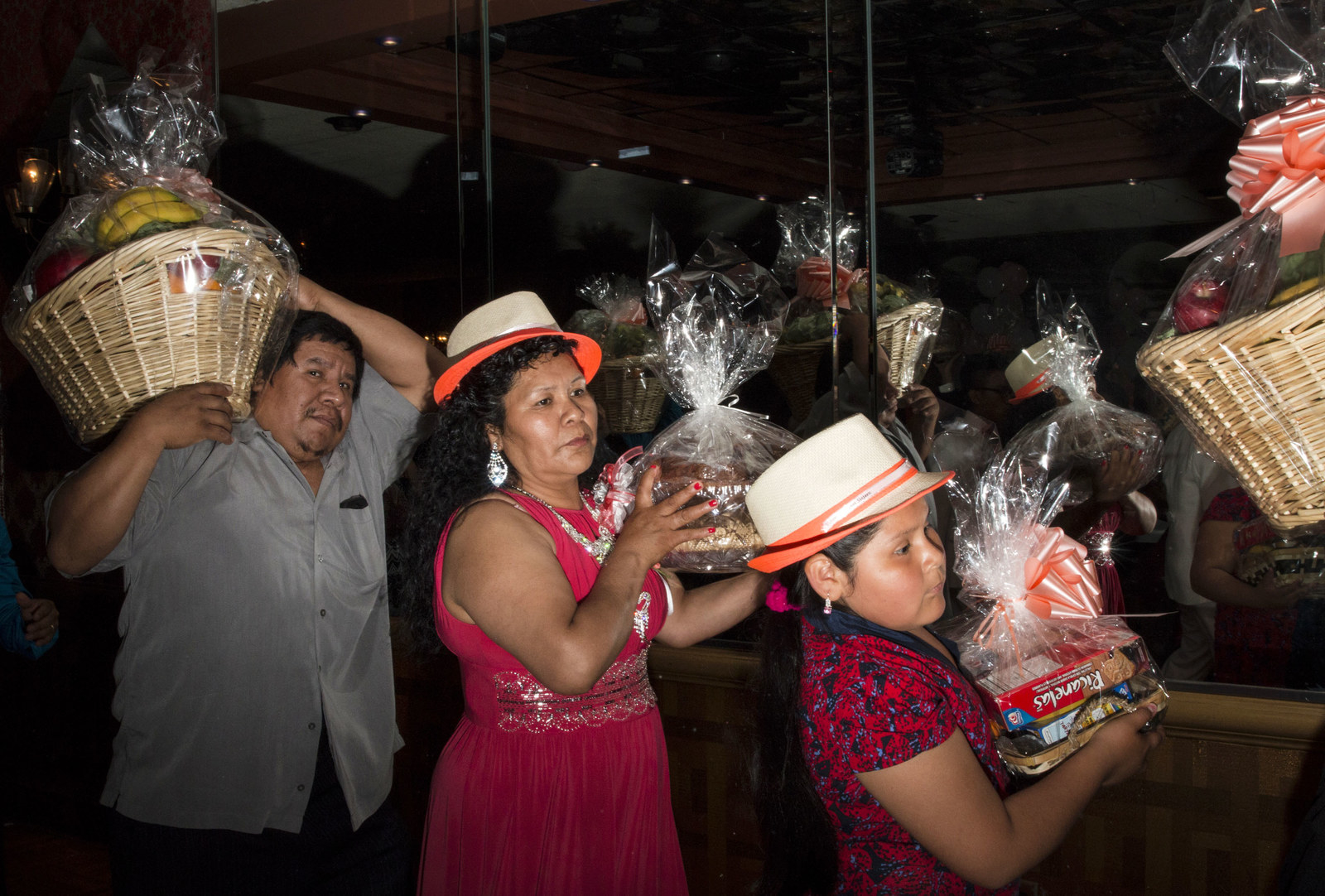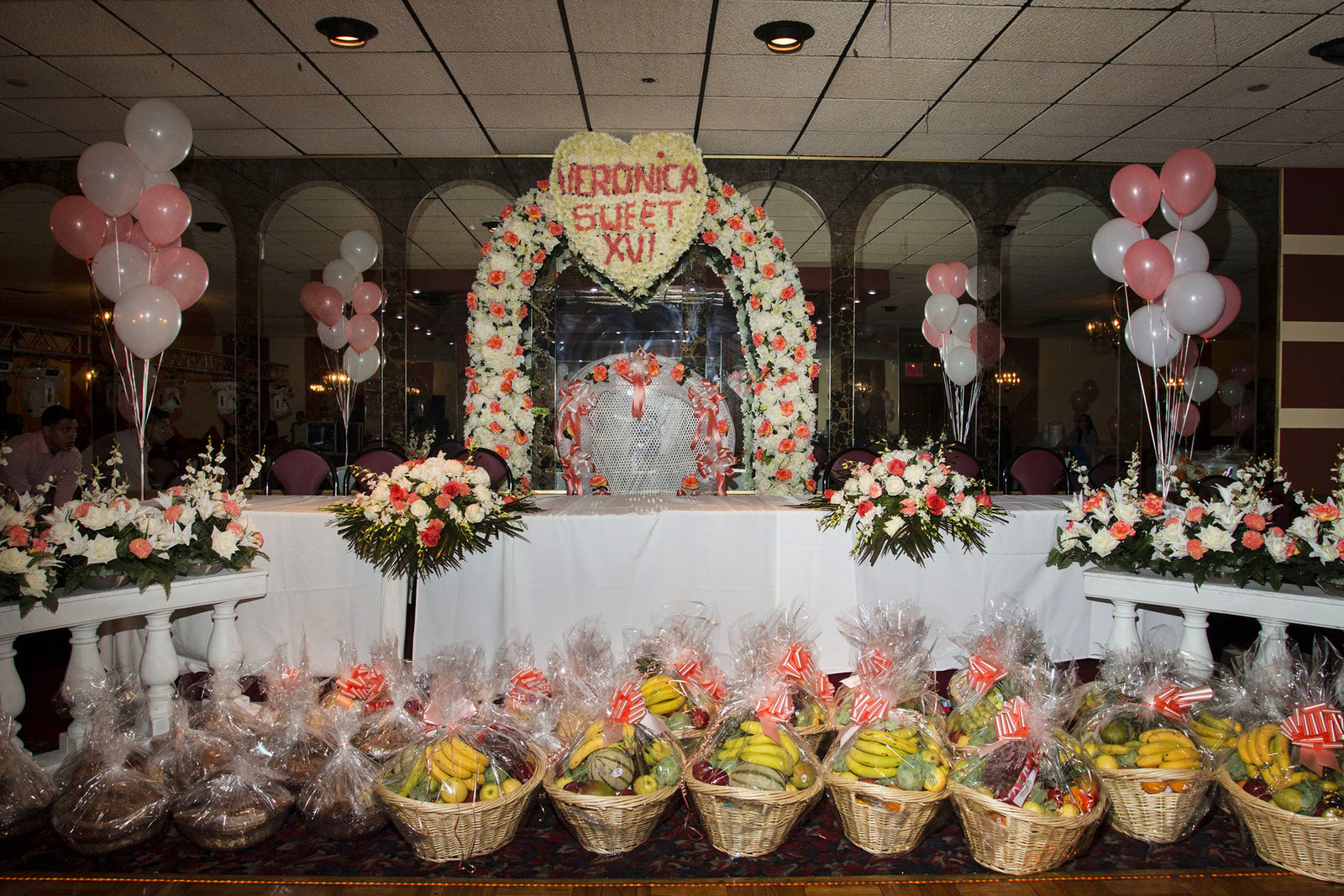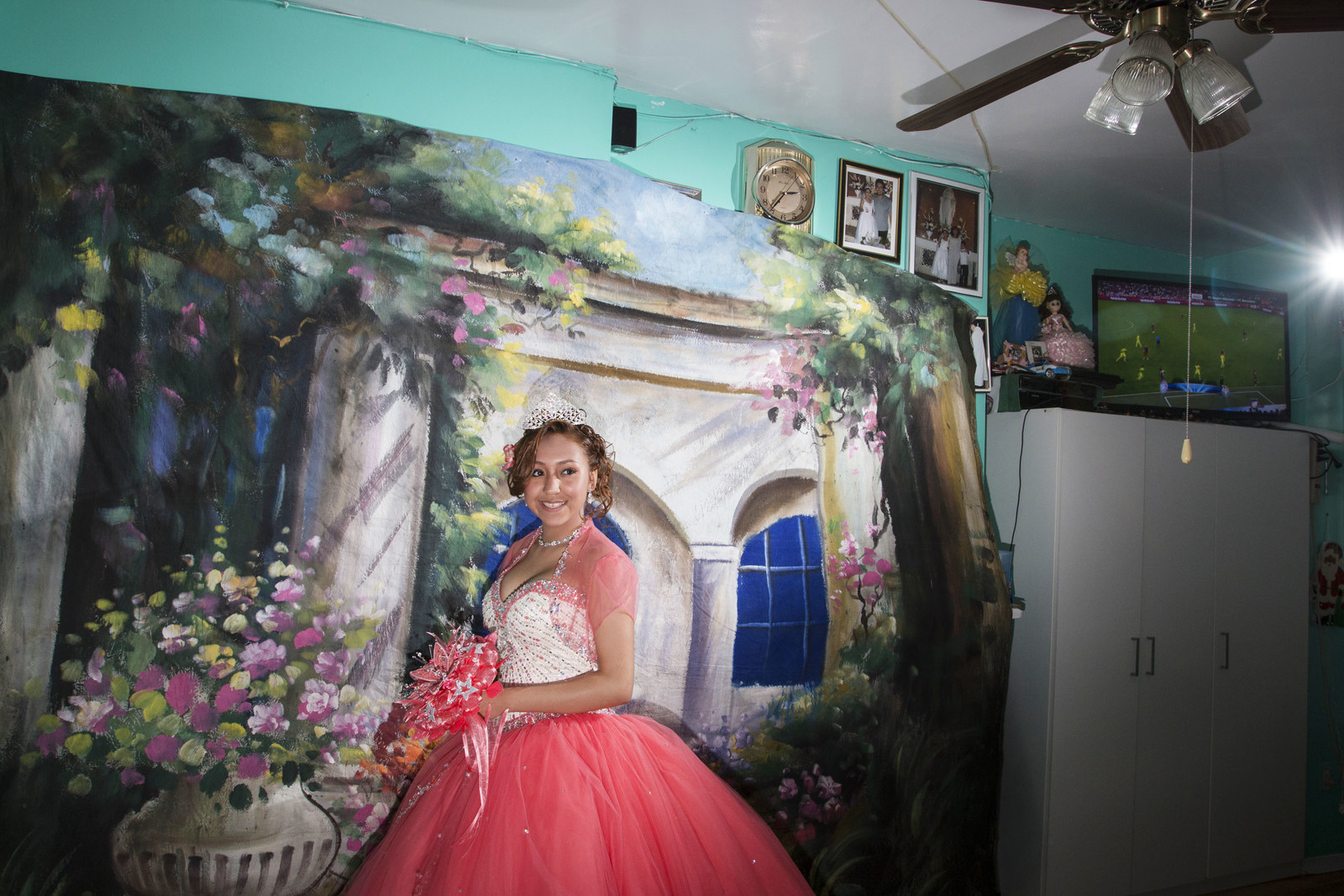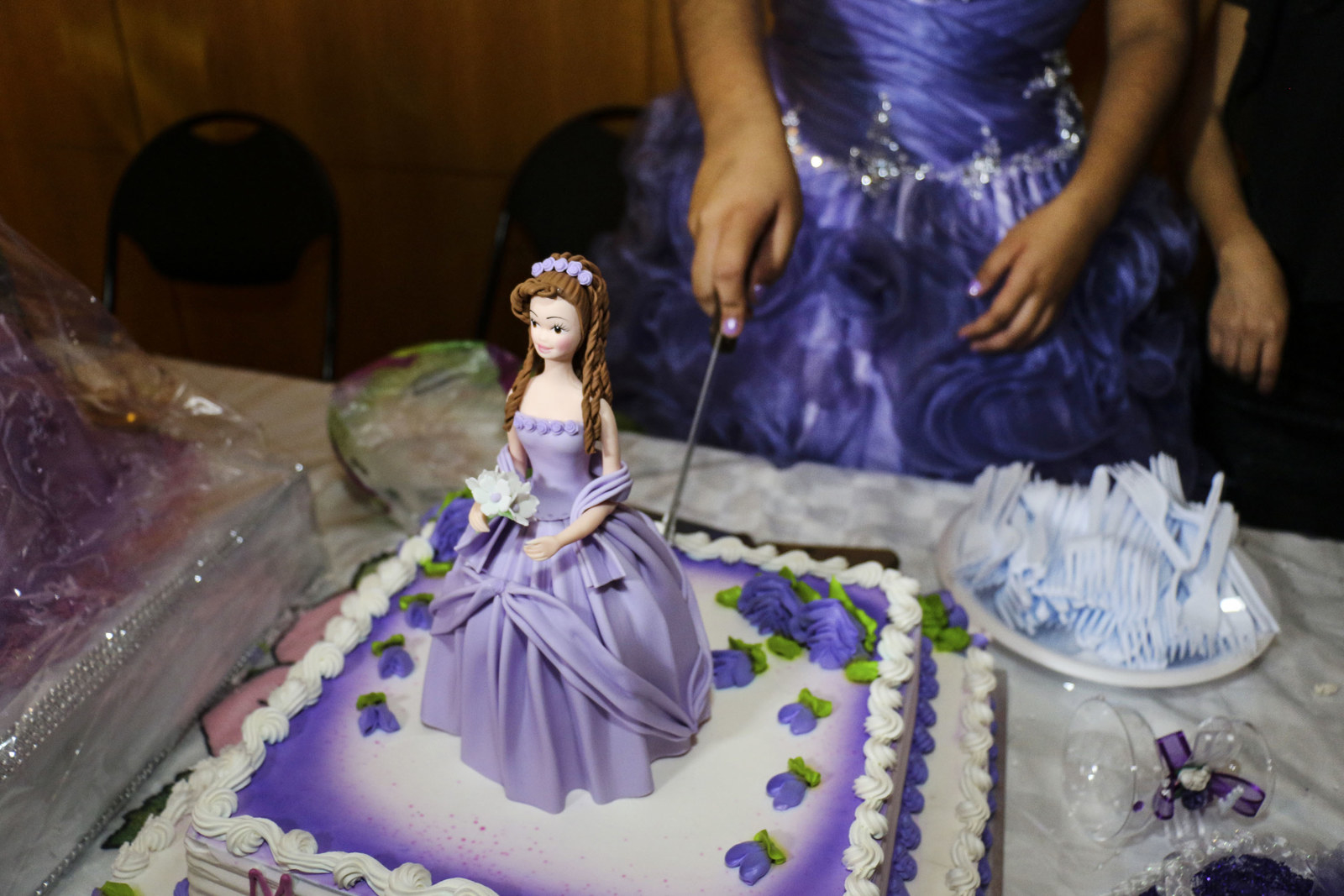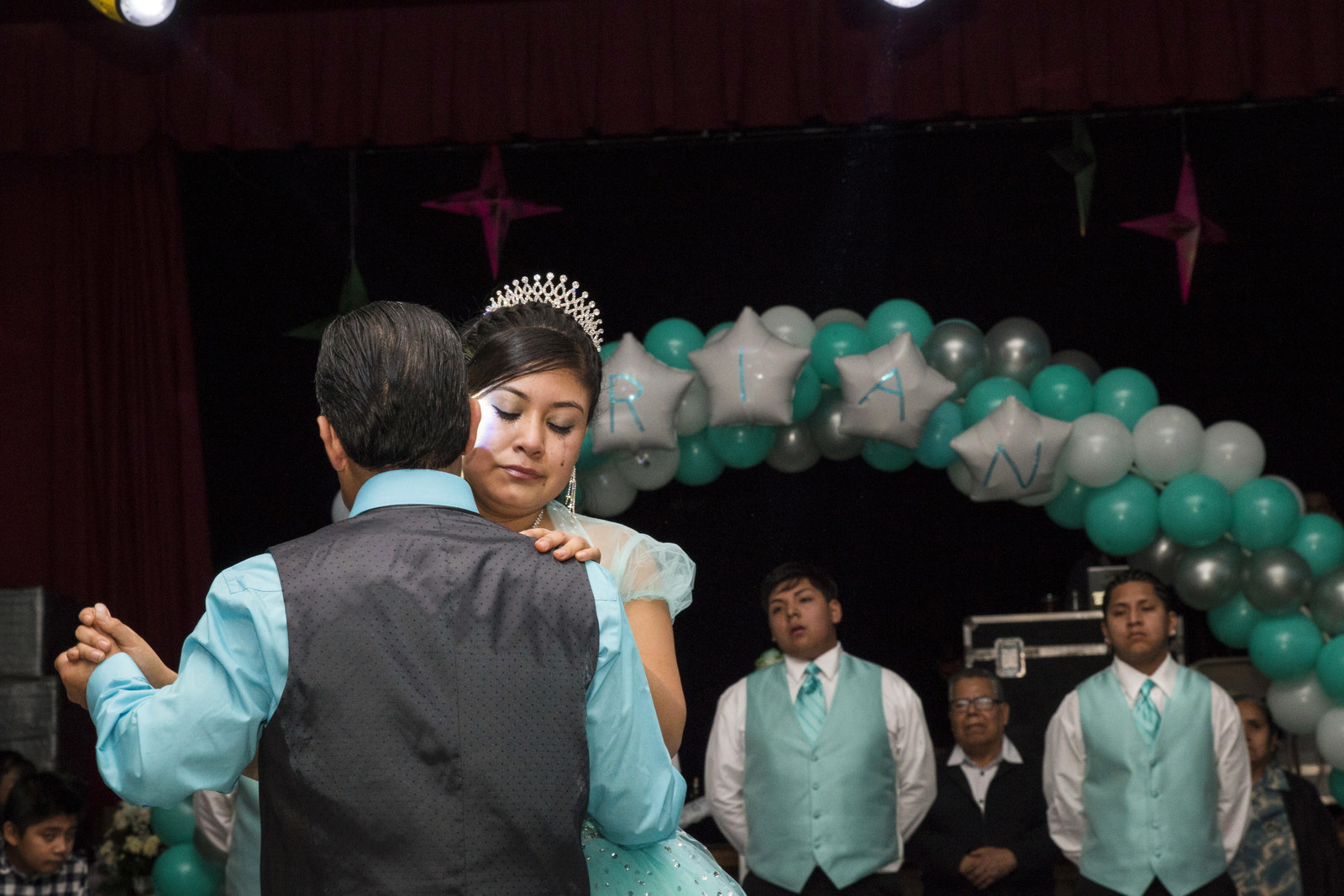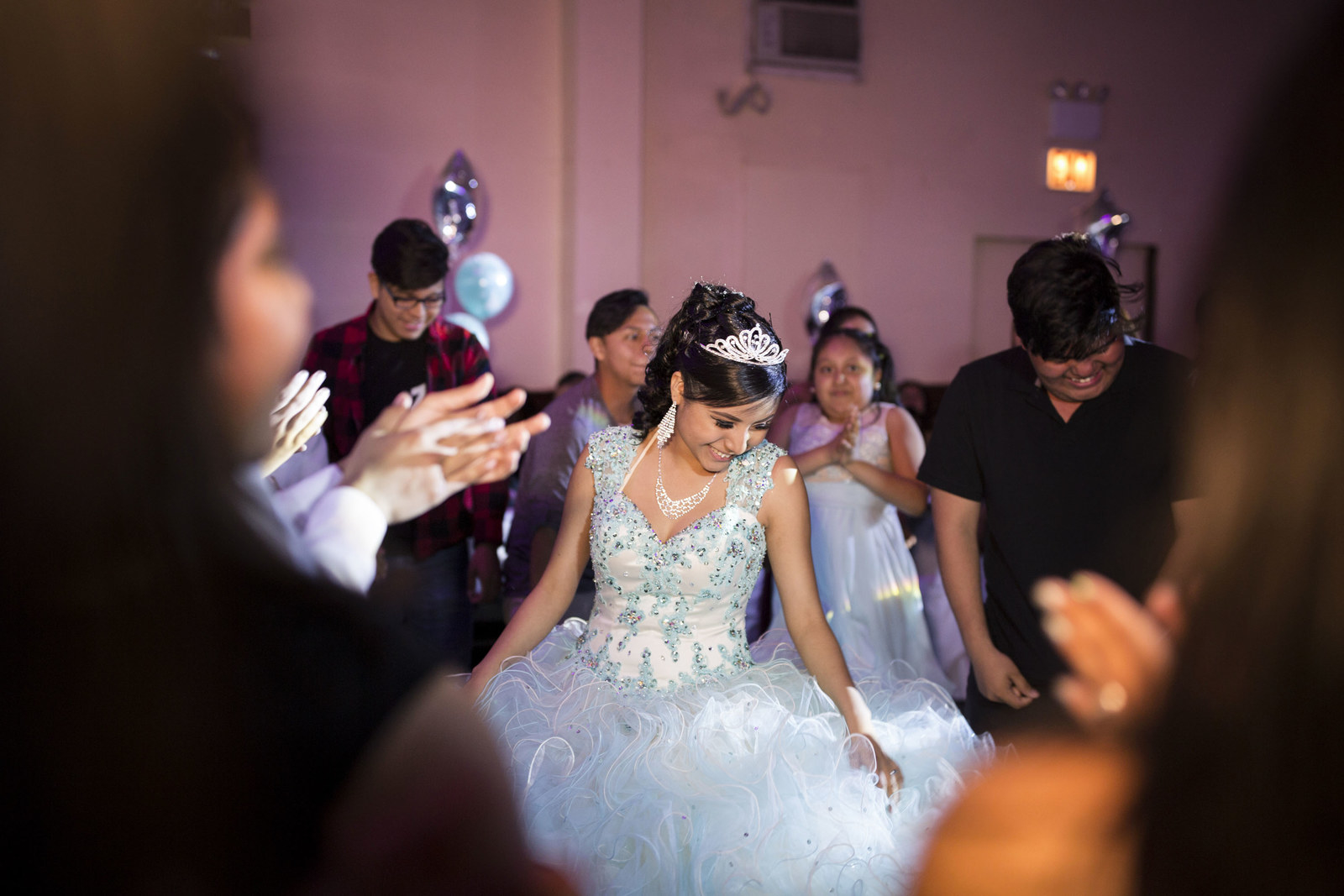
Cinthya Santos Briones is a Mexican photojournalist based in New York City, whose work focuses on issues of identity, migration, and gender. Since 2013, Briones has been documenting one of the most important rites of passage for girls in Mexican communities — the beloved quinceañera celebration.
Here, Santos Briones shares with BuzzFeed News her poignant photos, as well her expertise and thoughts on the rituals surrounding quinceañeras:
The sweet fifteen party, known as a quinceañera in Mexican culture, is a celebration that marks publicly the transition from being a girl to becoming a woman. It's a community celebration that acknowledges when a girl has reached maturity.
Beyond being a rite of passage, a quinceañera is a family event that envelops the community and creates strong ties of compadrazgo. They are the compadres — that is to say the godfathers and the godmothers of the quinceañera are the ones who sustain and pay the party. Back in Mexico, this one of the most important festivities and is sustainable precisely because it is done by the entire community. The padrinos, or godparents, are the ones who foot the bill. It's all a public display of the family's capacity, economically and socially, to convene the community and signals their status within the larger society.


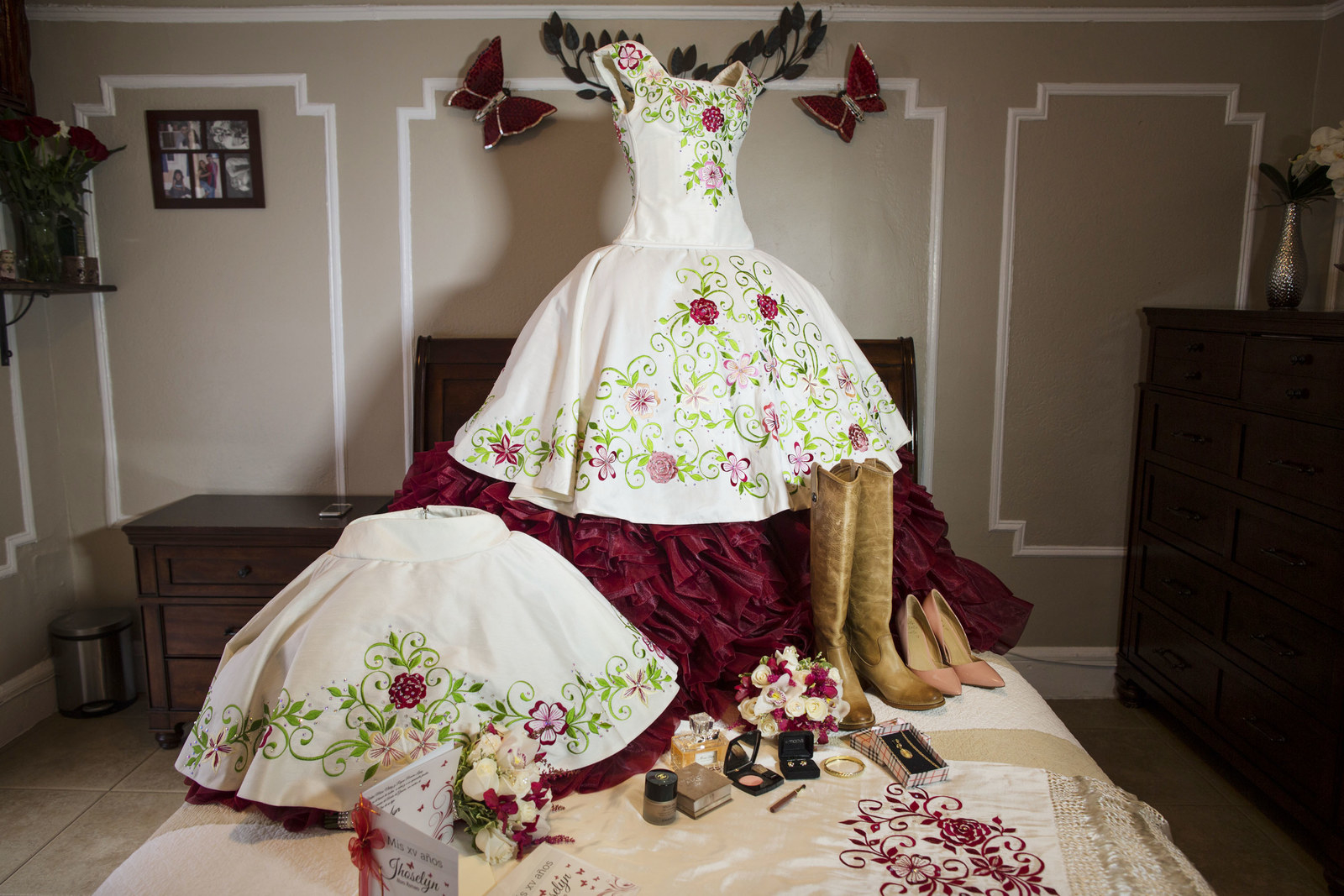
This series started for me before I began studying photography at the International Center of Photography in New York City. A great Mexican friend of mine who lives in the Sunset Park neighborhood of Brooklyn is a renowned choreographer of quinceañeras among the Mexican migrant community. He was the one who invited me to take pictures for the first time at a quinceañera's party.
In the pictures, I focused mainly on portraying the most sentimental and important moments, such as the waltz, the Mass, the cake, and the coronation of the quinceañera. My intention is also to speak of the community ties that exist between the Mexican migrant communities in New York through the quinceañera's party.
For the occasion, the girl wears makeup, an extravagant hairdo, and a colorful, elegant dressing gown that the quinceañera has chosen on her own. In the Mexican tradition, if the quinceañera is Catholic, the festivities begin with a thanksgiving Mass. There, the quinceañera goes to the religious celebration formally dressed — the gown is generally ostentatious, creative, and alludes to her status as a princess. She also may wear a medal that's been blessed by a priest and given to her by one of the many godparents. She is accompanied by her parents, godparents (often by the same baptismal godparents), and chambelanes, or dancers.
After the Mass, there is a huge party, wherein all the attention continues to be focused on the quinceañera, who, together with her entourage, dances, has a toast and cuts the cake.
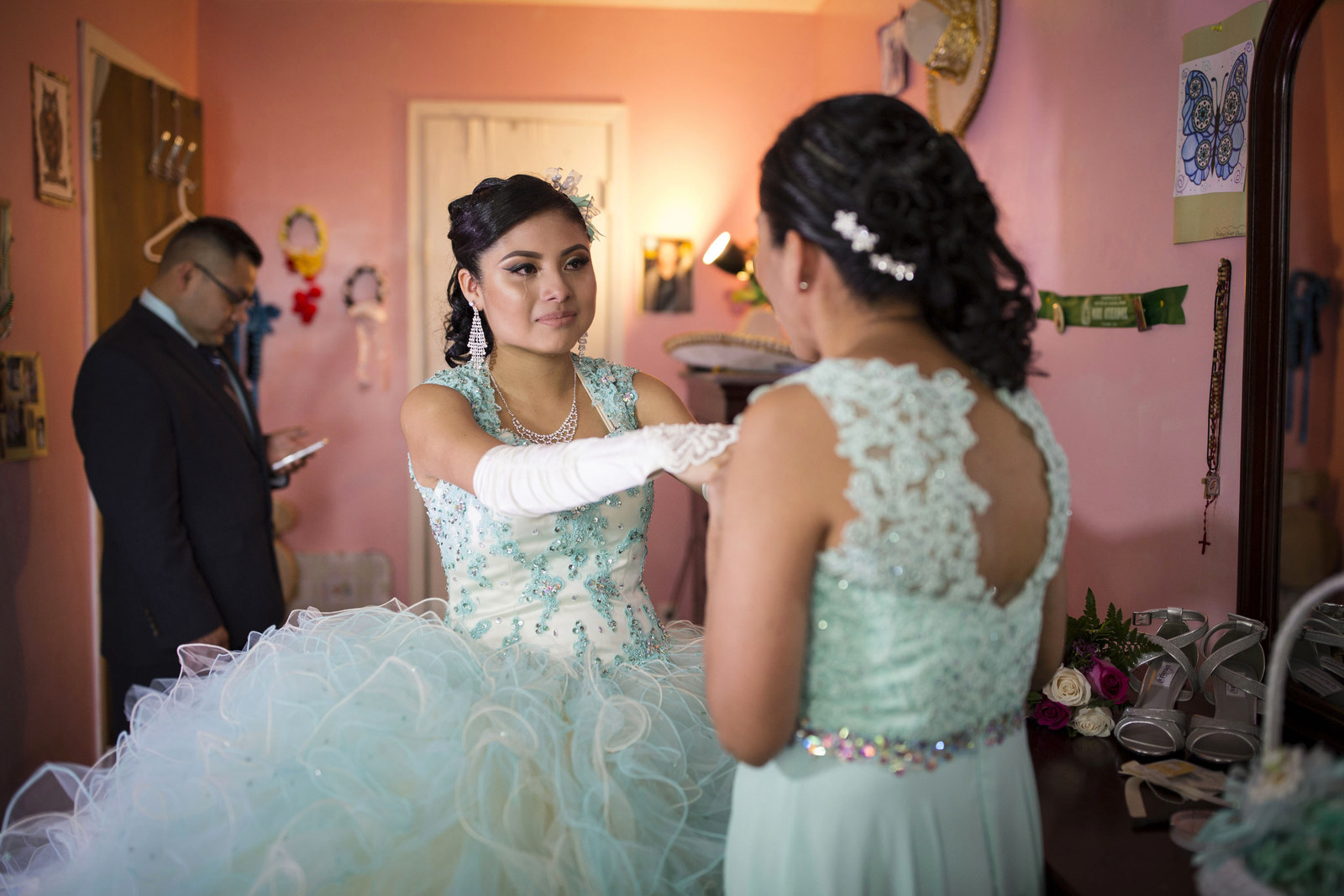
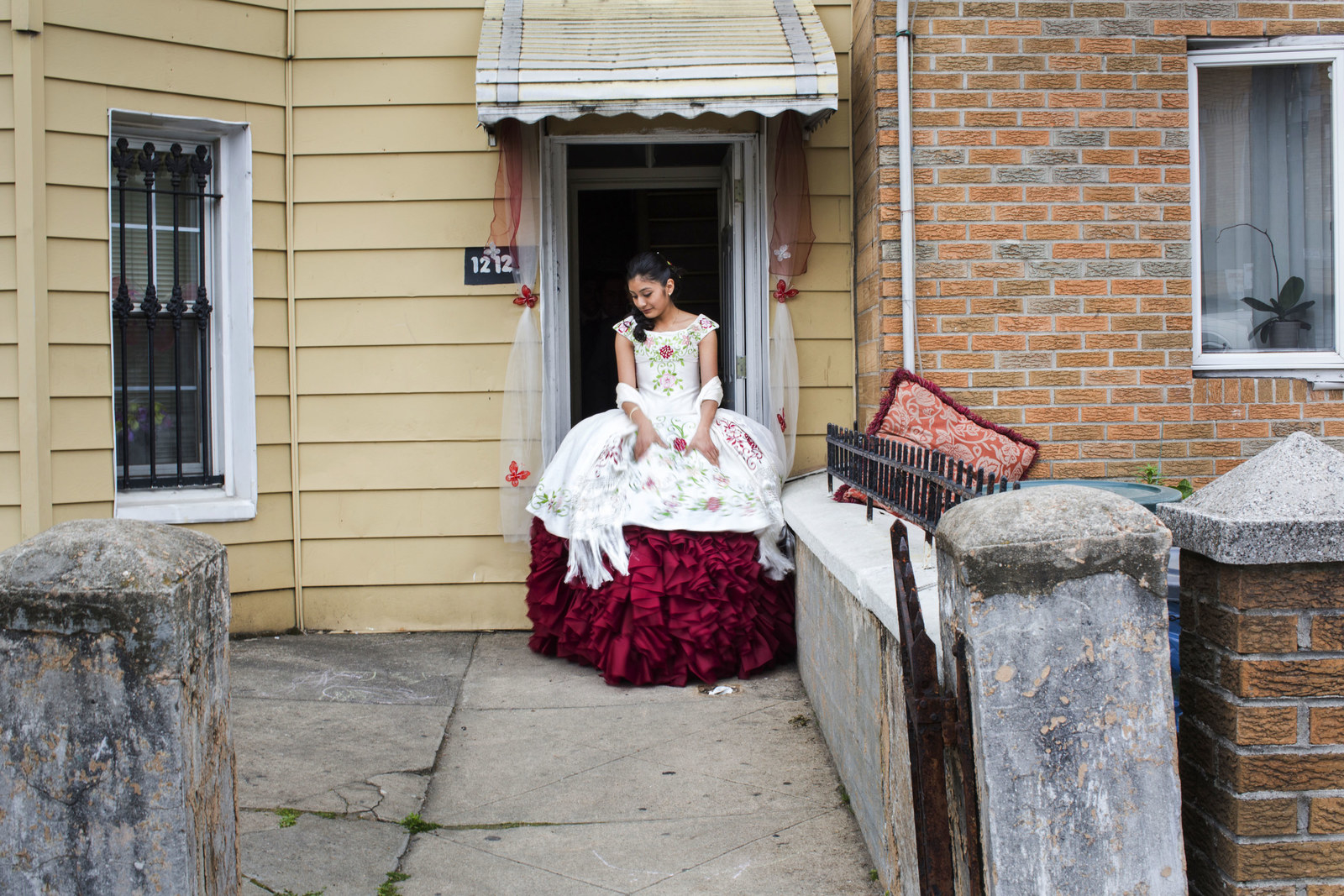
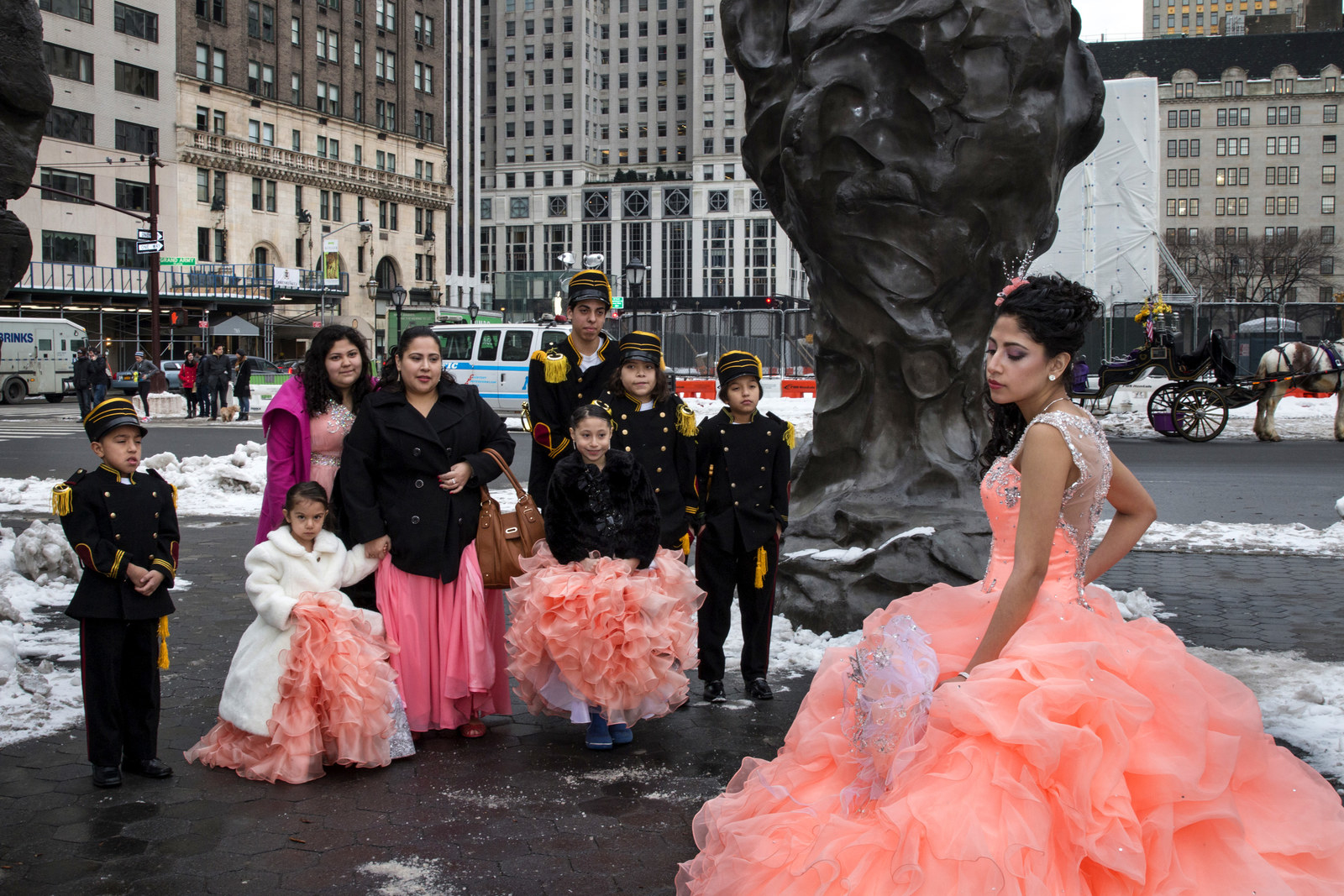
There is a godfather and godmother for everything — each one is responsible for paying for things like the limousine, the dress, the party room, drinks, music, the photographs, the video, the cake, etc. That's why the quinceañera's party is really a community party — it's made to help a family with the celebration of their daughter's party.
Without the godfather and godmother there is no party, since the expenses usually cost around $20,000 to $40,000. For a working-class immigrant family it is impossible to pay for this alone, but with the help of family, friends, and community they can do it.
There are other significant rituals as well — such as parting from her last toy. Also, there's the ritual of changing shoes, usually by the father, from at regular flat shoe to a heeled shoe. This symbolizes her passage to adulthood.
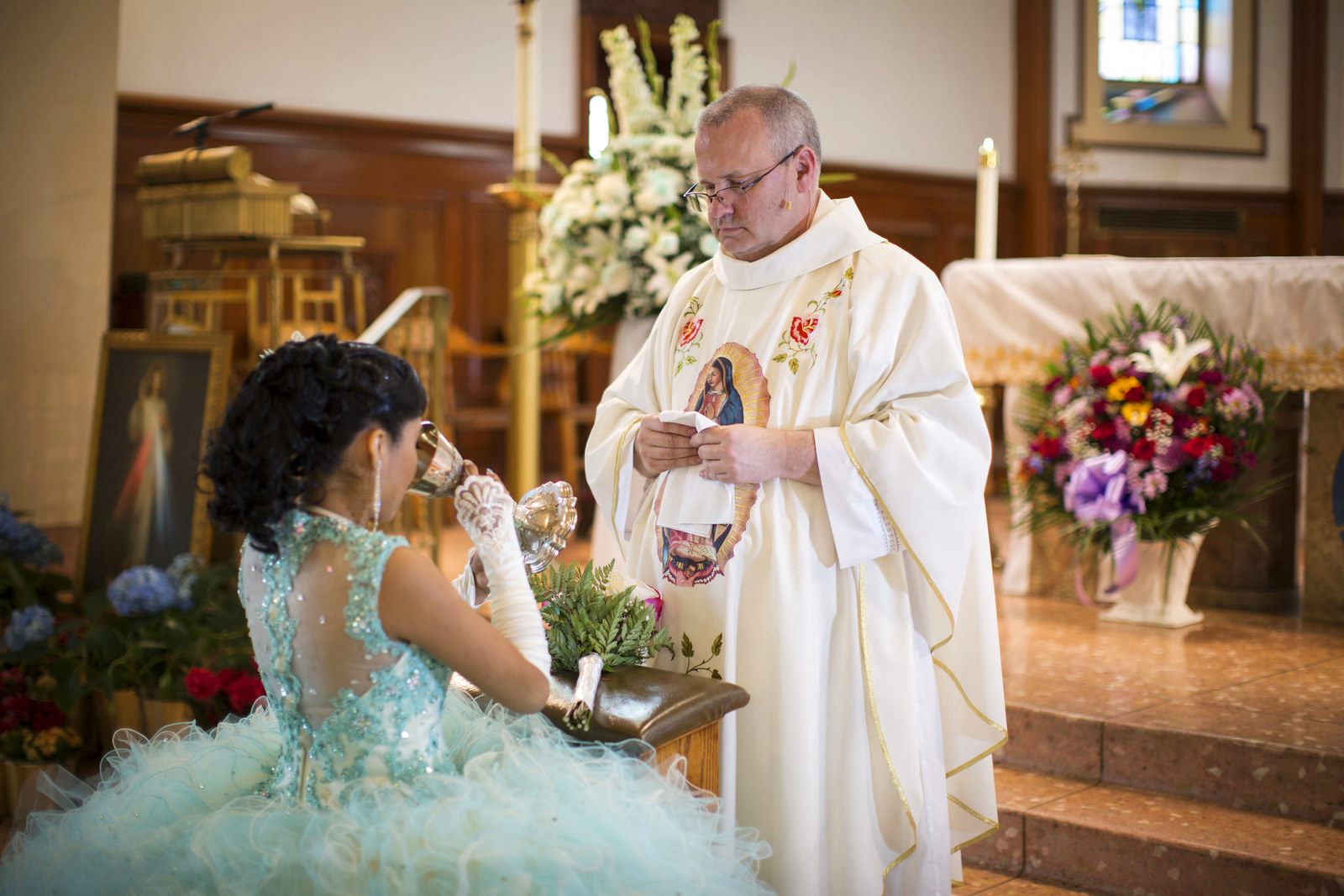
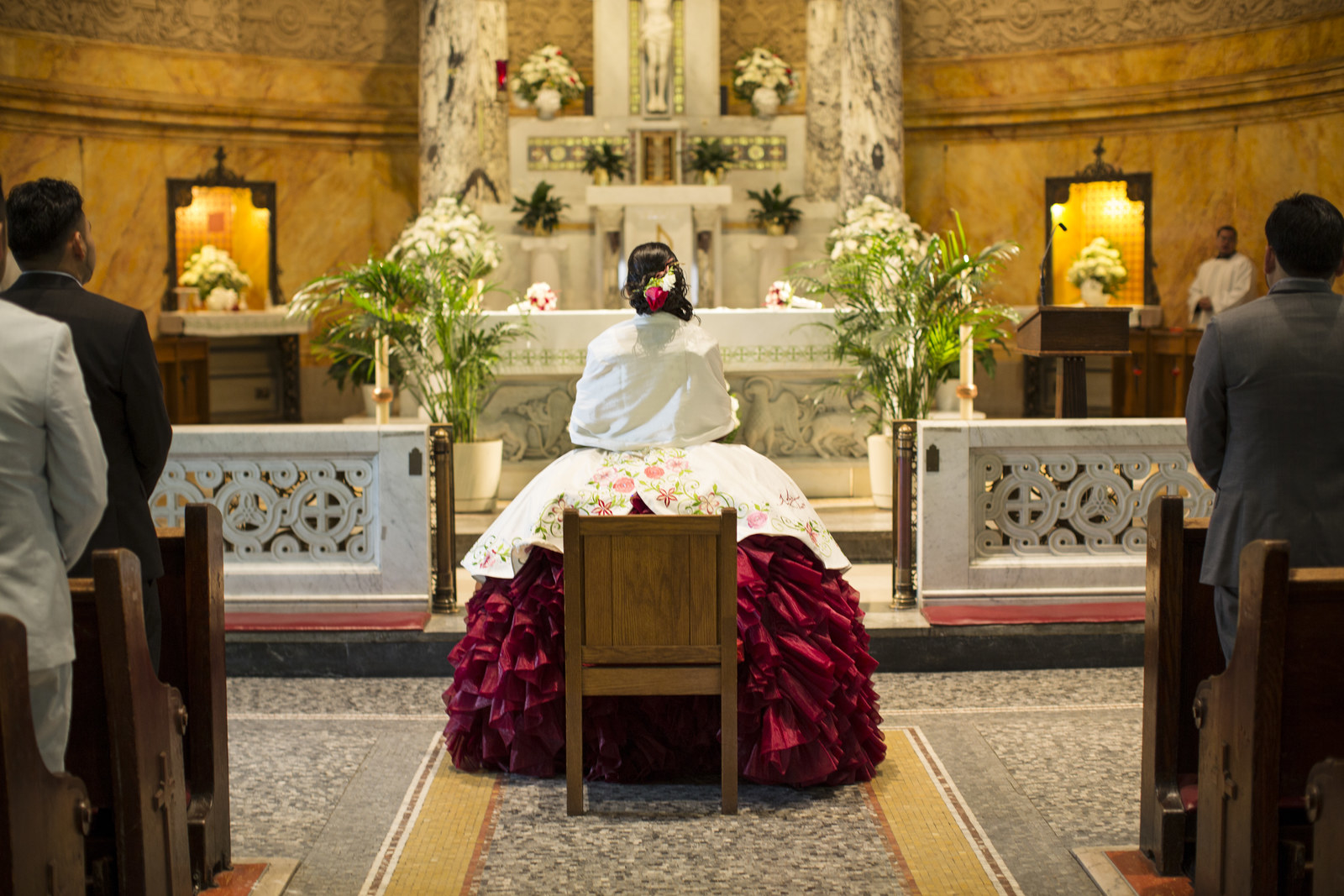
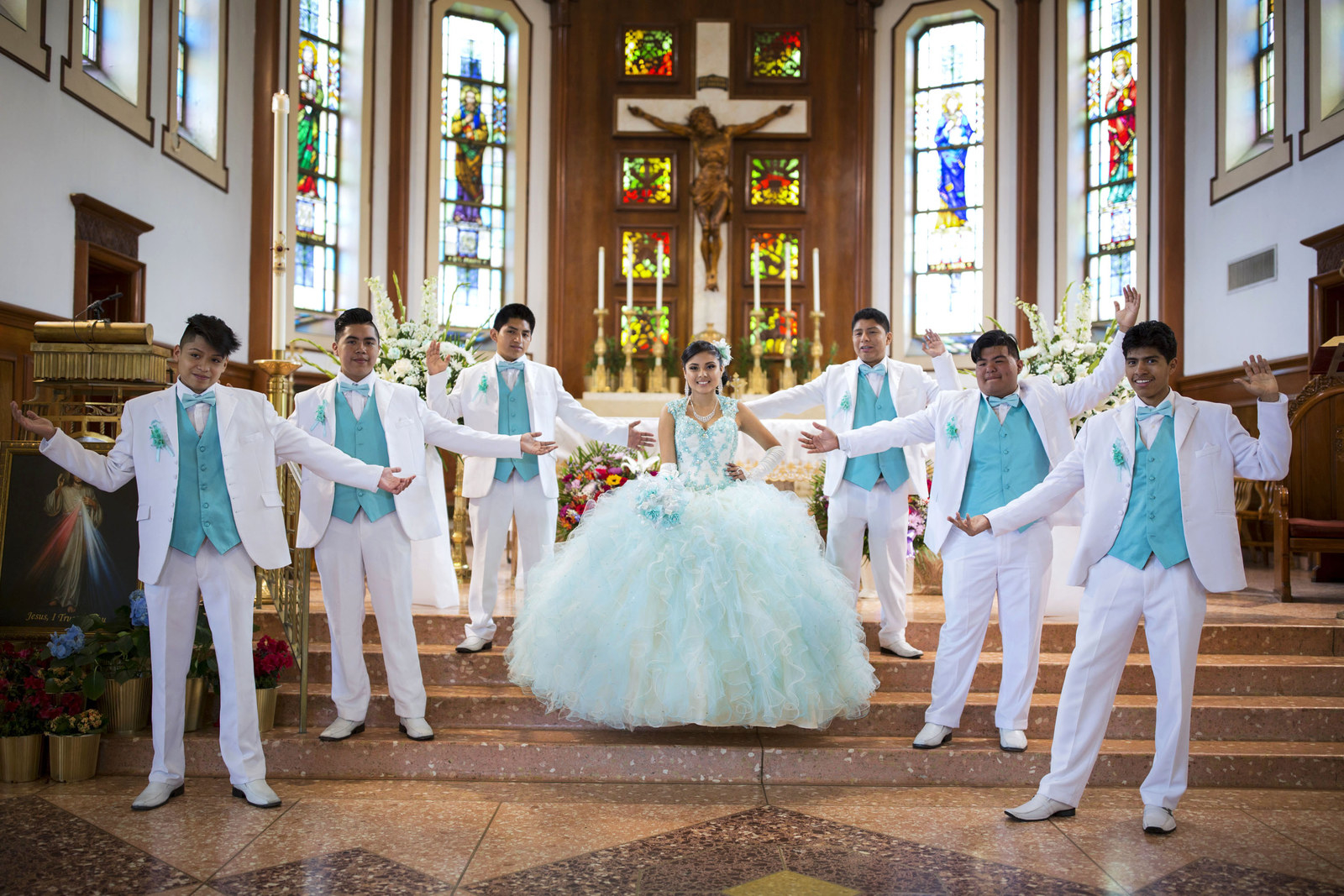
As a Mexican migrant and anthropologist, I'm reminded by this project of what we are as a culture and community. How, despite the difficulties that we live with in the United States as migrants, we celebrate and celebrate in a big way. The majority of the parents of these quinceañeras are undocumented, as well as their families, friends, and sometimes even the quinceañeras themselves.
Sure, there is a generational and cultural division at times — we see the community of migrants on the one hand and the new generation of children and adolescents who were born or have grown up between two cultures, Mexican and American, speaking two languages, Spanish and English. But in the US, they are a target of racism, xenophobia, and discrimination. Celebrating in these difficult times reminds us that we are not alone, that we have been growing as a community beyond the border by these rites of passage. We have fought in the transnational space so our culture, language, traditions, and religion do not die, remain alive.
